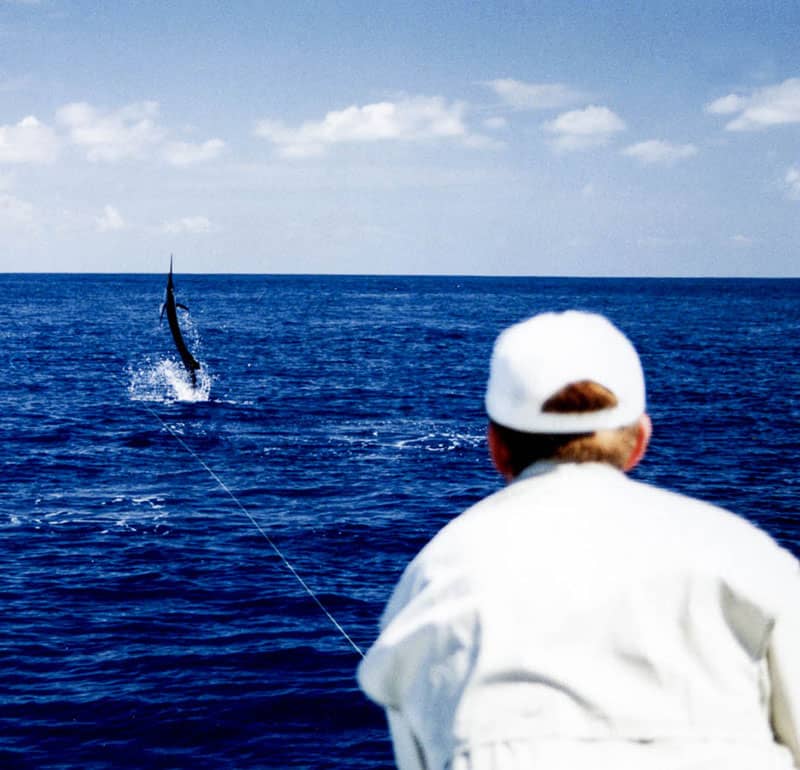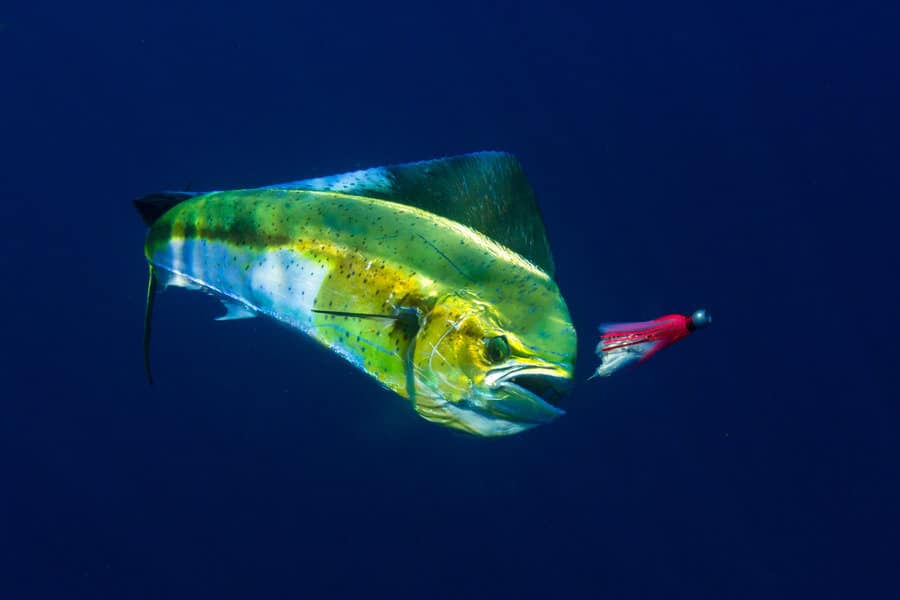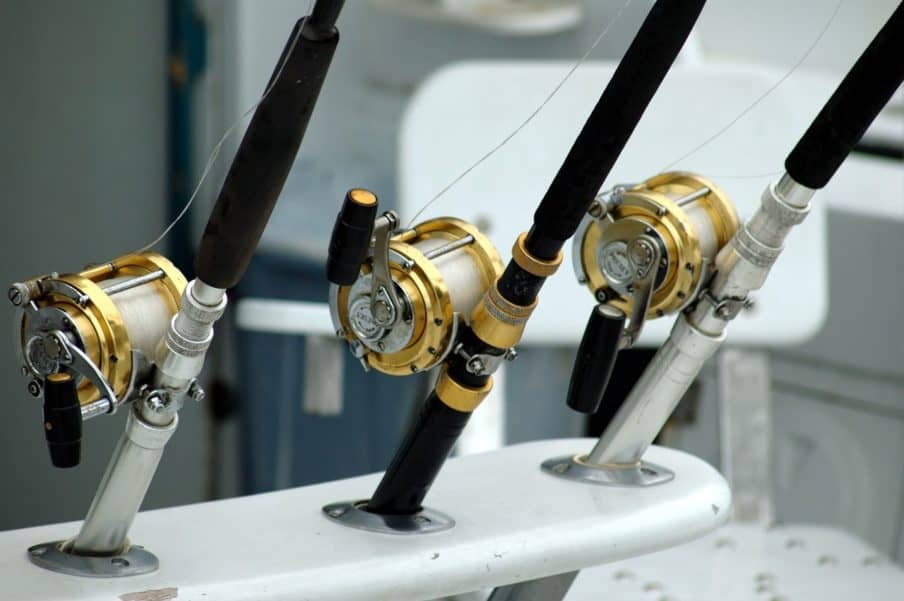
Costa Rica is known for its stunning natural beauty and abundant wildlife, but it’s also a great destination for fishing enthusiasts. With a coastline that stretches over 1,000 km and a diverse range of freshwater and saltwater environments, Costa Rica offers a wide range of fishing opportunities for both beginners and experienced anglers.
Whether you’re looking to catch marlin, sailfish, snapper, or roosterfish, there is a fishing destination in Costa Rica that is perfect for you. In this blog, we’ll explore some of the best places to go fishing in Costa Rica, from remote jungle rivers to world-famous offshore hotspots.
Fishing in Costa Rica: A Guide to Each Area
I will cover the major fishing areas in Costa Rica and do my best to describe the fishing opportunities, the facilities available and the most productive time to fish those areas.
The North Pacific Coast
Can you imagine what a sight it must have been? A million or so years ago when the volcanoes blasted out of the ocean floor piling rocks and lava for hundreds of miles creating what is now known as Central America.
This also created an underwater maze of formations that many species of sport fish call home or frequent to feed during their migratory routes.
The entire western shore of Costa Rica is made up of these spectacular coastline works of nature. They are home to an untold number of varieties of snappers and groupers.
The finicky and celebrated “sport fish,” the roosterfish hangs out in this area along with several varieties of jacks, rainbow runners and sharks.
Going a little further offshore the volcanic activity has formed pinnacles that rise hundreds of feet out of the ocean floor, attracting baitfish that start the “bigger fish eats littler fish” chain of life. Marlin, Sails, Tuna, and Dolphin fish take advantage of the feeding opportunities here.
One of the exciting things about fishing the Pacific in Costa Rica is that all these popular species can be taken year round but that being said there is still a seasonal migration where the fish in Costa Rica move up and down the coast and during one time of year a certain area will be excellent for several months but then again slow during the others.
Generally speaking fishing on the Pacific in the central coast of Costa Rica is from December through April where the major bite of migratory species will be in the center of the country and south.
The rest of the year, May through November the best bite will be to the north. There are exceptions to every rule, of course.
Bat Islands to Cabo Blanco
The areas of Bat Islands and Cabo Blanco can be very productive, with a wide variety of species to catch.
The Bat Islands, located on the northwest coast of Costa Rica, are known for their abundance of big game fish such as marlin, sailfish, and dorado. These islands are a popular destination for sport fishing, and are accessible by boat from the nearby town of Santa Rosa.
Cabo Blanco, located on the southern tip of the Nicoya Peninsula, is known for its excellent inshore fishing. The waters around Cabo Blanco are home to a wide variety of species such as snapper, grouper, and snook, as well as smaller game fish like jacks and mackerel. This area is also a popular destination for fly fishing, with opportunities to catch tarpon and other species.
Both of these areas are known for their clear waters and rich marine life and are considered prime fishing locations in Costa Rica. The best time to fish in these areas will vary depending on the species you are targeting, and it’s best to check with local fishing guides or charter companies for up-to-date information on the best time to go fishing and the most productive areas.
Although the main Costa Rica fishing season is considered April through December, in the months of January and February the waters off Nicoya produce some of the best marlin fishing to be found anywhere in the world. Most of the fishing there is out of Playa Carrillo to escape the Papagayo (bring your dramamine) winds that often blow that time of year.
The Catalina Islands
The Catalina Islands, located off the northwest coast of Costa Rica, are known for their excellent fishing opportunities. The waters around the islands are home to a wide variety of species, including marlin, sailfish, tuna, dorado, and wahoo.
The islands are also home to a variety of inshore species such as snapper, grouper, and jacks, which can be caught year-round.
The peak fishing season for marlin and sailfish in the Catalina Islands is typically from December to April, while the peak season for tuna is from May to October. Dorado can be caught year-round, but the best time to catch them is typically from June to September.
Tamarindo
Located on the northwest coast of Costa Rica, is a popular destination for sport fishing. The waters around Tamarindo also have a wide variety of species, including marlin, sailfish, tuna, dorado, and wahoo.
The area is also home to a variety of inshore species such as snapper, grouper, and jacks, which can be caught year-round.
There are several American captains fishing out of Tamarindo with over 20 years’ experience fishing these waters and the Charter boats in this area, during peak fishing time range from 22 to 38 feet and on up.
You will also find a few boats working a little further south out of the towns of Nosara, Punta Guiones, Garza, Samara, and Playa Carrillo.
As I mentioned earlier the number of boats increases from December through March when the unpredictable Papagayo winds blow to the north.
The Southern Pacific Coast
This southern region, including the Osa Peninsula, Golfo Dulce, and south to Punta Burica offers some of the best possible fishing opportunities to be found anywhere on earth.
Drake Bay and Cano Island
Drake Bay is most commonly accessed by way of boat traveling the Sierpe river, but an airstrip capable of handling six passenger planes is now in place. The mouth of the Rio Sierpe is surrounded by a lush mangrove estuary system that offers fishing for snook, snapper, and corvina.
Between the island and the mainland, outside the protected area is a massive volcanic rock reef system. Trolling in this area often produces tuna, wahoo, and an occasional sailfish or marlin.
What the reef is famous for is giant Pacific cubera snapper. These “freight train” of a fish often go over 50 pounds and several world records have been broken fishing the reef.
Along the coast of the mainland several volcanic structures attract many varieties of snapper as well as roosterfish. The most popular hot spots are Corcovado rock and the Plates. The Plates are a series of underwater rock plates that resemble dominos that have toppled over.
Golfo Dulce
There are quite a few Lodging and fishing choices out of Golfito like the Fish Hook Marina Hotel or Zancudo, and Jimenez on the Golfo Dulce. Boats running offshore have easy access to the blue water species and the gulf offers excellent fishing as well.
entire eastern shore is volcanic structure, holding several types of grouper and snapper and the Esquinas river in the northeast corner of the gulf produces some big black snook. Rio Coto at Zancudo is also a snook producer.
This mangrove lined river also holds big snapper, but the underwater roots of the mangroves make for a convenient escape route. Probably the most famous structure in this region is Matapalo Rock.
Just outside the mouth of Golfo Dulce, the structure is home to good numbers of amberjack, snapper, and roosterfish. Occasional surprises in this shallow water have been sailfish, wahoo, dorado, and mako sharks.
An ideal fishing trip if you can talk one of the local operators into it is a run down to Punta Burica, the southernmost tip of Costa Rica at the Panama border.
Because of the contour of the coastline the voyage from Punta Banco to Punta Burica takes you through a section of blue water on the way to the rarely fished rock structures at Burica.
This offers anglers a chance to tangle with sails, tuna, dorado, snapper and roosterfish in one day of fishing.

The Central Pacific Coast
Puntarenas, Punta Leona, Jaco Beach, and Dominical all have small fishing operations on the central west coast of Costa Rica but the nucleus of the fishing action is Quepos.
In the height of the season it is possible that over fifty boats of all sizes will be charter ready ranging from $450 to $1,200 a day.
This may seem like a large number of boats but in January and February it is difficult to find an available boat. Several of the more popular captains are booked more than 100 days in a row.
Quepos Fishing
The best fishing in Costa Rica is from December through April which makes many American anglers happy to escape the “great white north” for a hot tropical climate with some of the best fishing in the world.
On a typical day trolling out of Quepos, anglers can expect to have 10 to 20 sailfish up in the baits and possibly a marlin. Depending on the experience of who is setting the hook, releasing 10 or more in a day is more on the common side than something spectacular.
In late September of last year, six weeks before the normal Costa Rica fishing season begins, boats were seeing 15 or more billfish everyday.
In the prime season, numbers were way down and anglers were lucky to see 10 fish a day. In late April, boats were raising 20 to 30 fish a day, which is unusual for that time of year.
Although the target for most anglers are the billfish, Quepos waters hold good numbers of dorado and tuna also. Some tuna caught are up over 200 pounds and the dorado sometimes reach 60 pounds.
Inshore fishing can be very good around the rock formations and at the river mouths. Roosterfish and cubera snapper are the main attraction but snook are also abundant in the area.
In fact, they had a run of snook that hasn’t been seen in years. Forty pounds were common, and the numbers caught were phenomenal. The world record black snook came from these waters (57 lbs. 12 oz.) and bigger fish are there to be had by record seekers.
Every river mouth in the central Pacific region holds snook and many can be fished by surf casting.
Fishing on the Caribbean Coast
The Caribbean coast offers a unique fishing experience, with a different variety of species than the Pacific coast. The Caribbean coast is known for its excellent tarpon fishing, as well as snook, jacks, and barracuda.
The best time for tarpon fishing on the Caribbean coast is typically from April to June, and from September to November. Snook can be caught year-round, but the best time to catch them is typically from December to April.
The Caribbean coast of Costa Rica is home a few fishing lodges that offer all-inclusive packages and can provide all the necessary equipment, bait, and tackle. The area also offers fly-fishing trips, where you can target species such as tarpon, snook, and jacks.
Keep in mind that the Caribbean coast is less developed than the Pacific coast, so the fishing infrastructure and services are less developed.
Offshore Fishing in Costa Rica
Offshore fishing in Costa Rica can offer a wide variety of species to catch, including marlin, sailfish, tuna, dorado, wahoo and more. The best time for offshore fishing in the Pacific Ocean is generally from December to April, when the water temperatures are warmer and the big game fish such as marlin and sailfish are more active.
The Gulf of Nicoya, located on the central Pacific coast of Costa Rica, is also a great destination for offshore fishing. The Gulf of Nicoya is known for its abundance of sailfish, marlin, and other big game fish.
Several areas in Costa Rica like Los Suenos, Playa Hermosa, Jaco, Tamarindo, Quepos and Golfito are popular among anglers for offshore fishing. These areas are home to many experienced fishing charters that offer full-day and half-day trips, and can provide all the necessary equipment, bait and tackle.
When planning an offshore fishing trip in Costa Rica, it’s a good idea to consult with local fishing guides or charter companies for up-to-date information on the most productive areas that day.
Inshore Fishing
Inshore fishing in Costa Rica can offer a wide variety of species to catch, including snapper, grouper, roosterfish, snook, and more. The best time for inshore fishing in Costa Rica is generally from October to May, when the water temperatures are warmer and the inshore fish are more active.
The northern part of the country, specifically the Guanacaste province, is known for its inshore fishing. The beaches and bays along the Nicoya Peninsula, the Osa Peninsula, and the Papagayo Gulf are popular destinations for inshore fishing. These areas offer great opportunities to catch a wide variety of species such as roosterfish, snapper, grouper, jacks, and more.
Fishing charters are widely available in these areas and can provide all the necessary equipment, bait, and tackle. Some charters also offer fly fishing trips for species such as tarpon and snook.
Fresh Water Fishing
Freshwater fishing in Costa Rica can be a great way to experience the country’s diverse and abundant aquatic life. The rivers, lakes, and reservoirs of Costa Rica are home to a wide variety of species, including bass, snook, tarpon, and rainbow trout.
The best time for freshwater fishing in Costa Rica is typically from December to April. This is when the water levels are at their highest, and the fish are more active.
Popular freshwater fishing destinations in Costa Rica include Arenal Lake, located in the Arenal Volcano National Park, which is known for its bass and rainbow trout fishing. Lake Arenal is home to the Guapote, an exotic species of fish that can be caught year-round.
Costa Rica Fishing Calendar
Costa Rica has a diverse and rich marine life, and the fishing season for different species can vary depending on location and time of year. Here is a general fishing calendar for Costa Rica:
- January to April: Peak season for marlin and sailfish in the Pacific Ocean, and Gulf of Nicoya.
- May to October: Peak season for tuna in the Pacific Ocean.
- June to September: Best time to catch dorado in the Pacific Ocean.
- October to May: Peak season for inshore fishing in the northern part of the country, specifically the Guanacaste province, where species such as roosterfish, snapper, and grouper can be caught.
- December to April: Peak season for sailfish and marlin in the Gulf of Nicoya.
It’s important to keep in mind that these are general guidelines and actual fishing conditions can vary depending on weather patterns and other factors. It’s always best to check with local fishing guides or charter companies for up-to-date information on the best time to go fishing.
Final Thoughts
Whether you are looking to catch sailfish and marlin or tarpon and snook (maybe both) finding the right place and the right time in Costa Rica is something that requires expertise and many years of “local knowledge.” Who wants to risk an entire fishing trip or vacation for that matter, on outdated information?
So, before you go looking for Costa Rica Charter and in order for you to make the best decision, first take a look at the different areas for fishing in Costa Rica so you can decide what area would be the best for you!
And I will leave you with one expression that I have been told by many of the old-time captains.
” If you’re too busy to come down and test the waters, you’re just too busy!”

